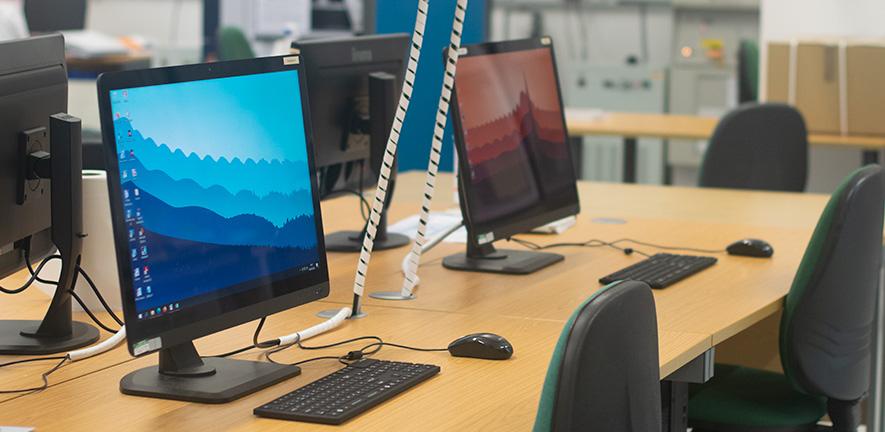
In addition to data collection computers, there are four computers dedicated for data analysis which can be used without booking. We have various software available for different tasks, detailed below:
Vendor-specific software:
Data collection
- Panalytical: Data Collector
- Bruker: Measurement Package - XRD Commander & Wizard
Viewing and converting data
- Panalytical: Data Viewer, Highscore+
- Bruker: EVA
Peak search and phase identification using ICDD PDF2
- Panalytical: HighScore+ Plots ICDD PDF2 reference data on experimental data
- Bruker: EVA, Search, can also plot ICDD 2018/2021 data in EVA (but not ICDD 2003)
Degree of crystallinity
- Panalytical: Profile fitting in HighScore+ followed by simple calculations in e.g. Excel
- Bruker: Profile fitting in Topas followed by simple calculations in e.g. Excel
Crystallite size and microstrain
- Panalytical: Profile fitting in HighScore+ peak widths followed by simple calculations in e.g. Excel
- Bruker: Topas with fundamental parameters, use Cheary and Cohen’s method to account for instrumental broadening - this is the most rigorous approach
Cell parameters for composition or strain on powder samples
- Panalytical: HighScore+ for profile fit then cell parameter refinement. HighScore+ for Reitveld (or Le Bail) profile fits & refines cell parameters in 1 go. For simple cubic systems, put cell parameters from several different ds into say Excel and extrapolate assuming a sample displacement error. For data on oriented thin films use Epitaxy.
- Bruker: Topas, routines for Le Bail and Rietveld refinement
Quantitative Phase Analysis
- Panalytical: Rietveld routine in HighScore+ (more rigorous), or Reference Intensity Ratio (RIR) in HighScore+ (‘semi-quantitative’), or use areas from profile fitting and callibration samples.
- Bruker: EVA with RIR method, or Topas with Rietveld
Calculating powder data from known structures
- Panalytical: Rietveld in HighScore+
- Bruker: Rietveld in Topas
Viewing, simulation and fitting of high resolution data
- Panalytical: Epitaxy or AMASS
- Bruker: Leptos (XRD)
Viewing, simulation and fitting of low angle reflectivity data
- Panalytical: Reflectivity or AMASS (Epitaxy is also helpful for viewing low angle reflectivity data)
- Bruker: Leptos (XRR)
SAXS data collection & preliminary data processing
- Bruker: SAXS and SAXS-Offline
Detailed SAXS data processing
- Bruker: DIFFRAC.SAXS
Viewing pole figures
- Panalytical: Dataviewer & Texture
- Bruker: TexEval
Vendor-neutral 3rd party software:
Viewing Structures
- CrystalMaker
Calculating, plotting & viewing stereographic projections
- Winwulff
Interfacing with AMASS, or other programming and maths
- MatLab, or Python using Jupyter Notebook, Spyder or Notepad++
See the available databases for phase identification and structural information
